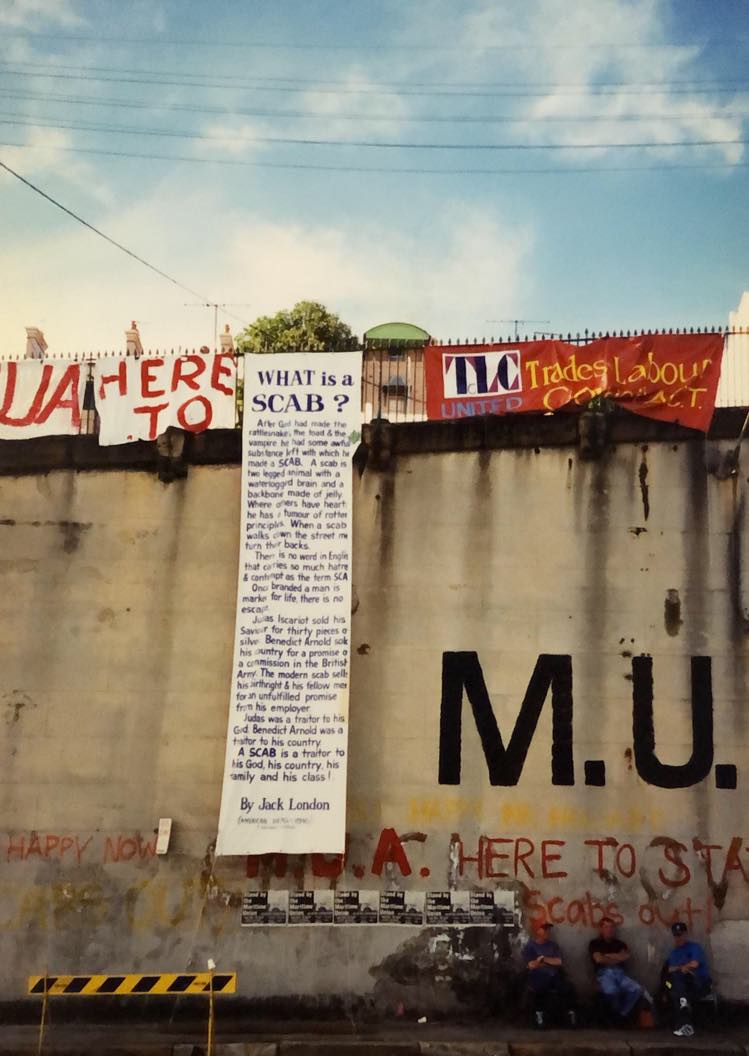
Twenty three years ago, in the lead up to May Day, I was on a bus from Canberra to Sydney’s Darling Harbour. The bus was packed with workers and union banners: we were to join one of Australia’s most famous industrial disputes led by the Maritime Union of Australia (MUA).
It was April 17, 1998, and Patrick Stevedores had sacked 1400 union members 10 days earlier. Patrick then locked the workers out, contracted new non-union companies and started bussing in scabs.
The then John Howard government enthusiastically backed Patrick and the entire union movement was outraged and mobilised to defend the MUA.
Few of those who participated in the dispute will ever forget the amazing experience of solidarity and equality. We linked arms and faced down waves of police intent on breaking our determination to stop Patrick boss, Chris Corrigan, from attacking workers.
It didn’t matter whether you were a builder’s labourer or a first year university student: all were welcomed to take part in what was a truly democratic experience of union solidarity.
At the Darling Harbour picket line I remember a debate about an offensive banner depicting a huge penis with the words, “Up yours Corrigan”. It had been painted by an MUA supporter and some were rather pleased with it.
When it was pointed out that most women and gay men on the picket line felt it was offensive, the workers discussed the pros and cons. The banner came down because it was not helping build the solidarity required to defeat Corrigan.
I remember finishing my stint for the day feeling so proud as we cheered in the packed bus of Wollongong workers set to staff the picket line for the night shift.
It was only a few hours later when the phones rang hot and we turned on the radio and TV to watch one of the real victories of the campaign.
Four thousand workers had turned out in Melbourne and spent the whole night, with arms linked, as every cop in Victoria, from Melbourne to Manangatang, was mobilised to smash up the picket.
Melbourne’s East Swanston dock was seen as pivotal. Corrigan and Howard needed a major breakthrough. But every unionist knew that if the picketline was smashed in Melbourne — Australia’s most unionised city — no worker in any industry would be safe from similar attacks and sackings.
The cops eyeballed the picketers from centimetres away, waiting for the signal to pull out their batons and start bashing.
Instead, the signal was to march in single file away from the fray. Why? Because 2000 construction workers appeared out of the darkness, led by the legendary unionist John Cummins, to surround the cops.
With the picket line in front and construction workers behind, the cops were snookered. It was the turning point of the dispute and, eventually, MUA members proudly marched back to work.
Of course, the dispute was not without its causalities. Governments learned how to use the courts in a way never seen before and many believe that the final deals were poor.
But what remains important about this dispute was the experience of working-class power and the potential of a united working class.
Green Left was there throughout. Comrades reported every twist and turn from the picket lines. We interviewed the MUA, union leaders and dozens of rank-and-file workers, while not shying away from what was being learned.
That’s why your support for our work is critical.
With your help, we can keep reporting on major disputes from a working-class perspective, drawing the lessons and helping to build the consciousness and confidence to take decisive action to turn the tables on anti-worker governments.
You can become a supporter here for as little as $5 a month, and you can make a donation here.
mua_1998_jill_hickson.jpg
